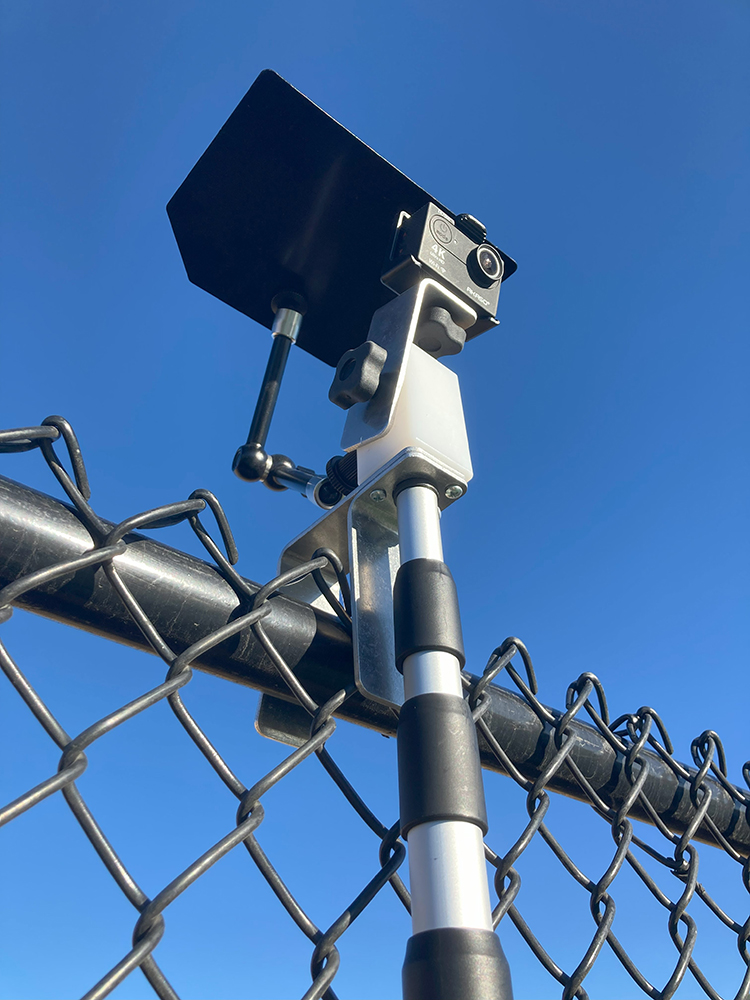“Come on! Hit the ball, stupid!!” Kristen yelled at herself after hitting a cross-court forehand into the net. She hit several more forehands, alternating down the line and cross-court. Another cross-court forehand into the net brought an even angrier reaction.
Have you ever experienced this scenario with one of your players or seen it happen with someone you’re watching? Chances are nearly every coach who works with junior tennis players has, most likely on a number of occasions.
Many junior players grow up playing in tournaments all over their state, the country, and in some cases, the world. They are placed in highly competitive situations that put them under a great deal of pressure at young ages. The effectiveness of their emotional responses is often challenged. Anger is one of the emotional responses that seems to surface in the intense competitive environment of junior tennis. Developing a better understanding of the role anger plays in junior tennis was the driving force behind this USTA research study.
The Junior Tennis Anger Questionnaire (JTAQ) was developed specifically for this project. A total of 117 junior players between the ages of 11-17, all of whom had national rankings in their respective age groups, filled out the JTAQ. Many interesting topics were covered in the questionnaire. Some of the results are highlighted and briefly discussed here.
A word of caution when interpreting results from questionnaires that allow players to fill them out on their own. There is always the possibility that the answers are either inaccurate (Ex. Players aren’t aware of what they do) or untruthful (Ex. Players lie about what they do). However, by keeping players’ individual responses anonymous and confidential, the hope is that they will answer as accurately and truthfully as possible. A few of the questions from the questionnaire are presented here. The results shed some light on the role of anger in junior tennis.
How often and intensely does anger occur and for how long does it last in junior players?
On average, anger tends not to occur very often, be very intense, or last for a long time. In other words, on the surface anger seems to come and go relatively quickly. This may be true. However, one has to wonder if teenagers really are aware of what they do on court. In all likelihood, most if not all of you have coached players who were sure they acted one way on court but in reality acted quite differently. This is one of the inherent problems when relying on players’ personal perceptions of what they do on court. Yet, even if a player is way off base, this provides you as the coach valuable information. They may have very little awareness of what they actually do. Videotaping matches can be a tremendous tool to help with increasing a player’s awareness of behavior. You and your player can review a match together and discuss how he or she responded in critical situations. Increasing awareness is a key step toward making changes.
What causes anger in junior players?
When anger does occur, players tend to get mad at their opponents for things such as cheating and making bad line calls. They also get mad in situations that might cause people to question their ability such as losing to someone they think they should beat. Both of these causes tend to be intensely personal to players and often lead to strong emotional responses. Communicating with players about the various things that lead to their anger then developing more effective responses are good places to start helping them avoid and deal with anger.
What are the effects of anger on the performance of junior players?
Anger appears to effect players both mentally and physically. Losses in concentration often accompany anger, yet players reported feeling challenged to play better. Players tend to talk negatively to themselves in the form of self-criticism when they get mad on court. Physical performance ordinarily decreased with anger, and seemed to take the form of hurrying to play subsequent points. Again increased self-awareness and more effective emotional responses to anger can help players avoid potentially negative effects of anger on performance.
What impact do role models have on junior players?
The role models in players’ lives appear to have a significant impact on players’ opinions on anger’s place in tennis. Fortunately, in this case the impact is positive. For example, players reported that their parents and coaches have told them they should control anger and not show it on court. The top professional players in tennis also influence what these junior players felt was appropriate and effective. They felt that since the top players in the game tend not to show anger on court they should avoid it also. This emphasizes the importance of coaches and parents providing a consistent and unified message to players on and off the court. If using professional players as examples helps this process, then by all means use them. The United States has a number of very good role models at the top of today’s tennis rankings.
These are just a few of the key findings that came out of the study. Hopefully they will help you in your search to pass on the latest and most accurate information to your players. While each player is unique, managing emotions such as anger in competition is a skill that young players must practice and work hard to develop if they are going to find out how good they can really be.
(The opening passage was excerpted from the United States Tennis Association Sport Psychology Guidebook for Coaches)














0 Comments